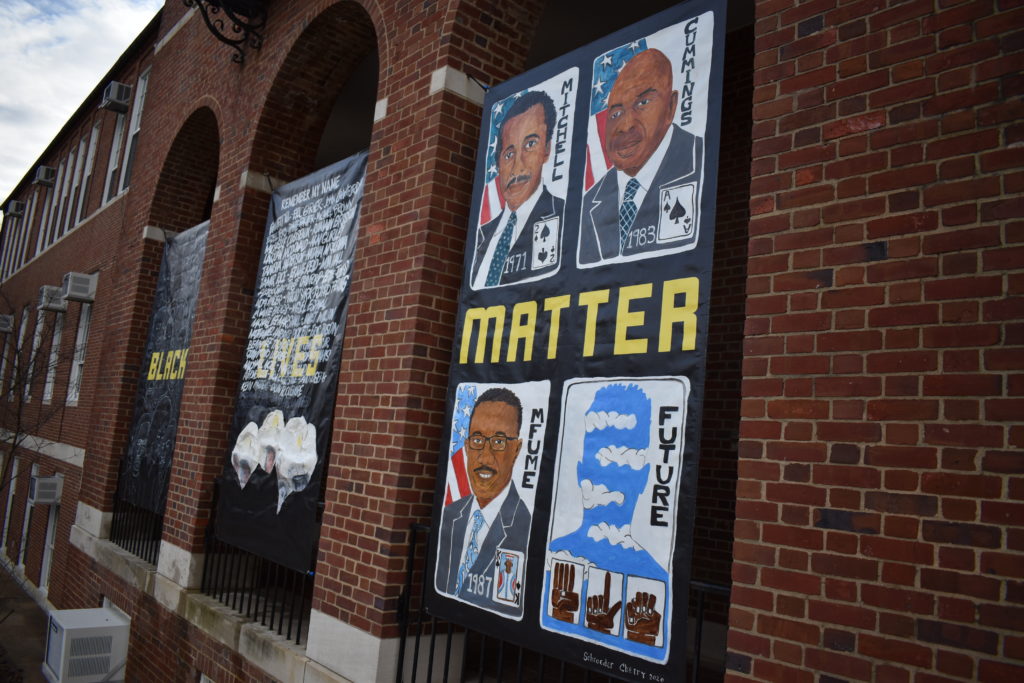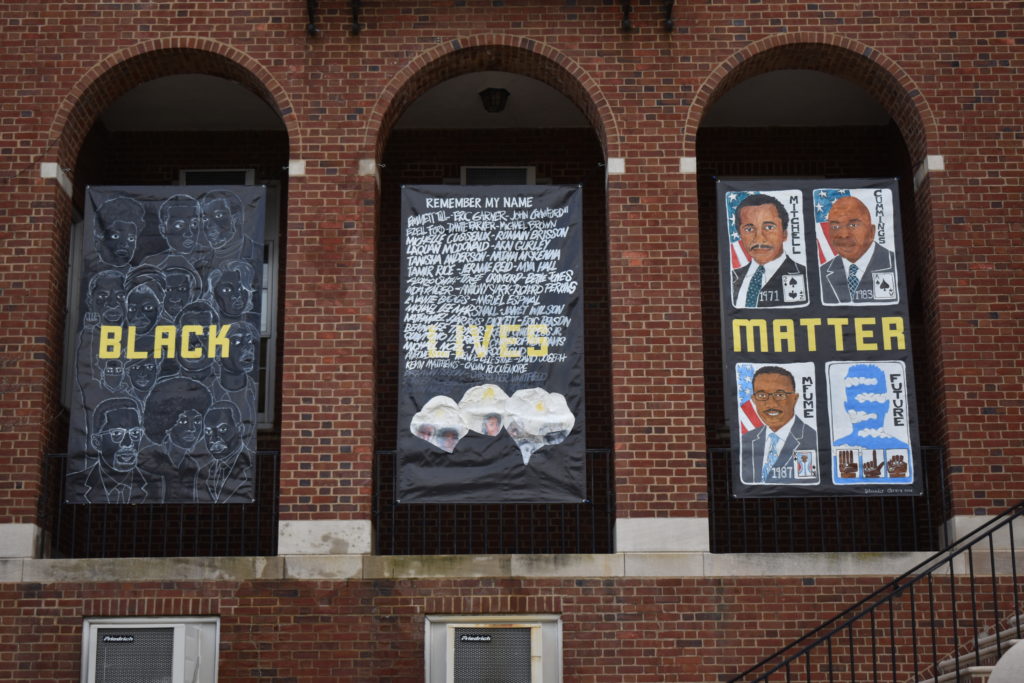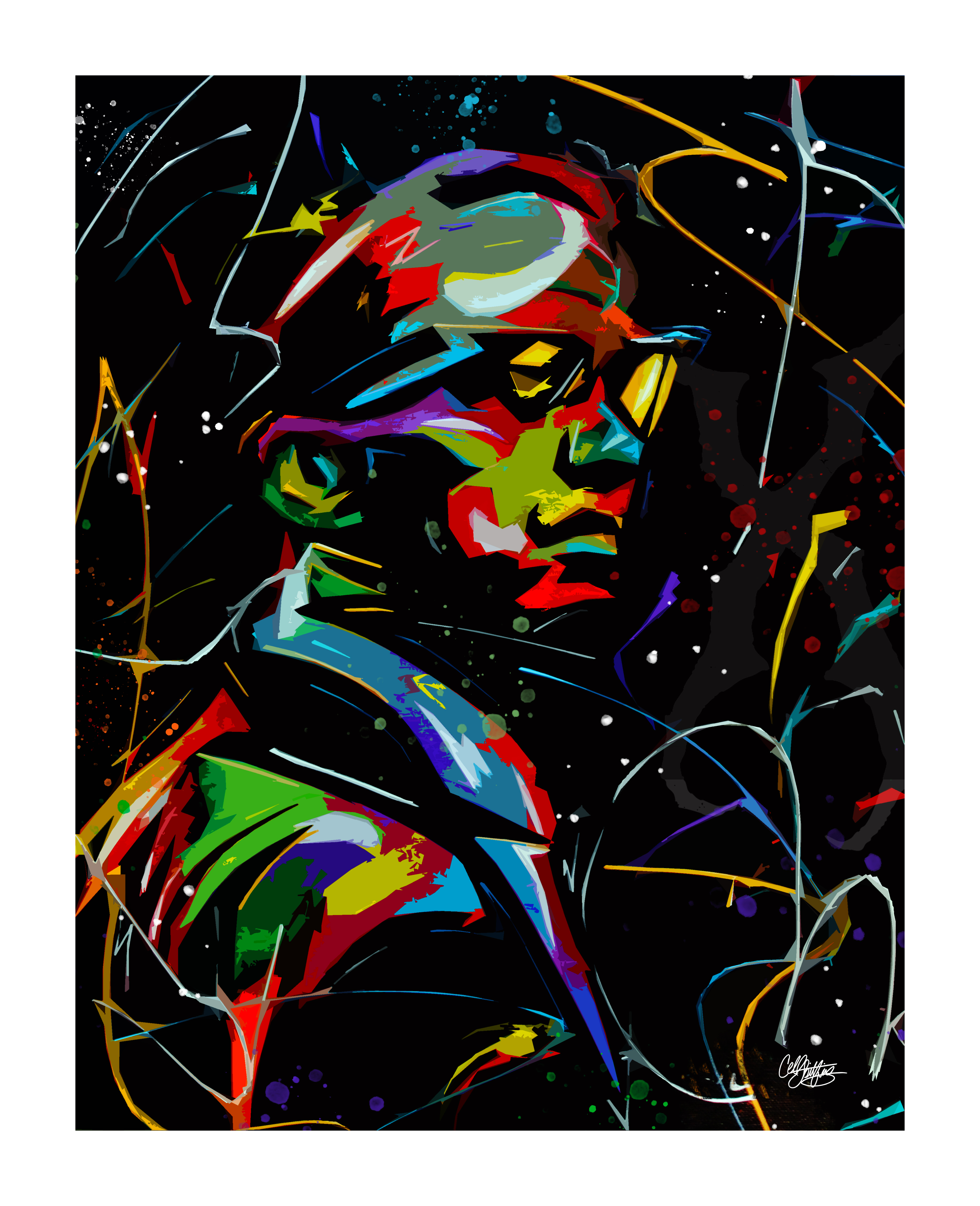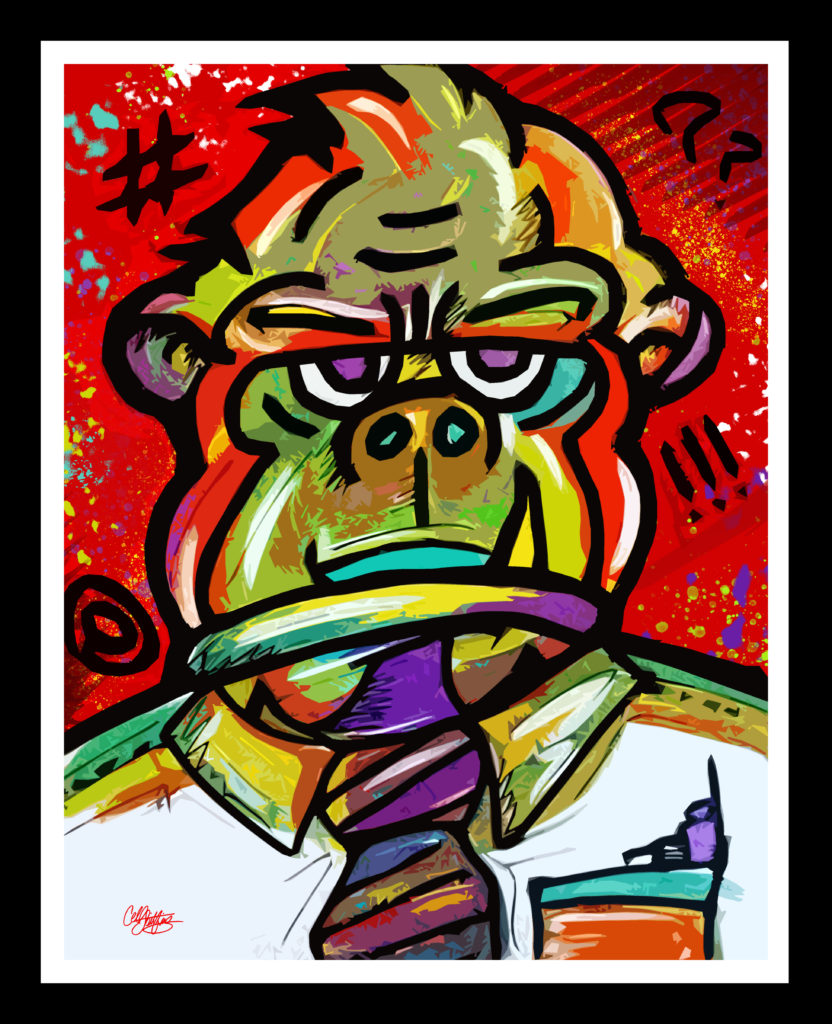SIGNS OF THE TIMES
The Art of Activism opens at Maryland Hall
By Charlie Youngmann
Maryland Hall reopens Friday for the first time since March to unveil something new: The Art of Activism, an exhibition of eight Maryland artists using their work to spark dialogue and change in the context of Black Lives Matter.
Artists have been using art to comment on societal issues including gender, race, politics, and religion for generations. The Art of Activism explores the ways in which current Maryland-based Black artists are using their work as a statement of activism.
Six vinyl banners were hung outside Maryland Hall in June, each displaying a single word in the phrase Black Lives Matter. For this exhibit, each of those banners was then assigned to a selected artist, says Katie Redmiles, Maryland Hall’s Digital Marketing and Communications Specialist. The artists were asked to use their banners as a canvas for whatever media they found appropriate to convey their own message inspired by their word.
The finished works anchor the new exhibit and additional pieces from the contributing artists will be placed throughout Maryland Hall for a socially distant gallery experience, Redmiles said.
A seventh banner will be displayed at the Banneker-Douglass Museum in Annapolis although they currently remain closed due to the pandemic, Redmiles says.
That banner, titled We Will Rise Up, is being designed by Annapolis artist Comacell Brown Jr., also known as Cell Spitfire.

Brown used his banner to highlight recent events, calling on elements of injustice, like the death of Breonna Taylor, and moments of excitement, like the Hoop Bus tour stop in Annapolis.
Brown says his piece is meant to commemorate the pursuit of justice for all, through the pandemic. “I always felt like art spoke volumes in itself, more volumes than a person can actually speak sometimes even with a platform,” he said.
After the death of George Floyd, Brown and fellow Annapolis artist Jeff Huntington worked on a freestanding mural of Floyd that featured the names of victims of social injustice. The public attention their piece garnered gave Brown the idea to use his work as an artist to send a much larger message.
“With art, there is no negativity in the protest, at least it’s not seen that way,” Brown said “With artwork, there is no violence. Even if you paint violence, no one is being hurt and that creates a healthy conversation.”
Brown has been painting since age 7, when he discovered art at a Salvation Army after-school day camp. While there were a number of crafts and activities to keep the children busy until their parents came to get them, Brown got his first opportunity to put brush to canvas as well as clothing. Following his passion for art and design into high school, Brown created his own clothing line. From there he sold shirts out of his backpack before attending The Art Institute of Atlanta and graduating with a degree in design in 2007. He now has his own graphic design business and partnered with several non-profits, allowing him to share his artistic knowledge with people from less privileged communities and “connect with those that may possess a real passion for it.”
In addition to his banner, Brown’s work will also be featured in the Maryland Hall portion of the exhibit. His paintings will hang in the same halls where he had begged his grandparents to sign him up for classes as a child, he said. “It’s always been a dream of mine to do something in Maryland Hall,” Brown said.
Another featured artist may be better known for his prowess on the football field. Former NFL linebacker Aaron Maybin, a Baltimore native, has also been a life-long creative. Having taken classes at arts institutions since he was in middle school, Maybin has dabbled in painting, sculpting, writing and even music for a time, he said.
While he was playing at Penn State University, he was working on an art degree. He spent five years in the NFL before retiring in 2014 to put his focus back on art.

Both of Maybin’s parents worked in the ministry, he says, raising him to be passionate about helping and advocating for others. While Maybin’s father was living in Maryland, he worked for the Baltimore City Fire Department and instilled a sense of community in the young artist.
“He always used to stress the importance of making sure that we recognize our responsibility to give back and recognize our responsibility to be a part of the changes that we want to see in the world,” Maybin said.
Having been given a vinyl banner with the word “Black” on it, Maybin explored the theme of Blackness for his piece. Using white paint, Maybin outlined a portrayal of some of his personal heroes in African American history. “That image is going to be powerful because it highlights the underlying theme of ‘even though we’re talking about Blackness, it’s still the white lines that are used to bring it up’,” he said.
In anything he creates, Maybin said he tries to shine light on something that deserves attention. He tries to use his voice as an artist to give power to those disenfranchised by systemic injustice of any kind, in hopes that it could bring about real change.
“When you look at any of the major social movements in the history of, not just this country, but this world, those messages and those stories were related to the arts,” Maybin said.
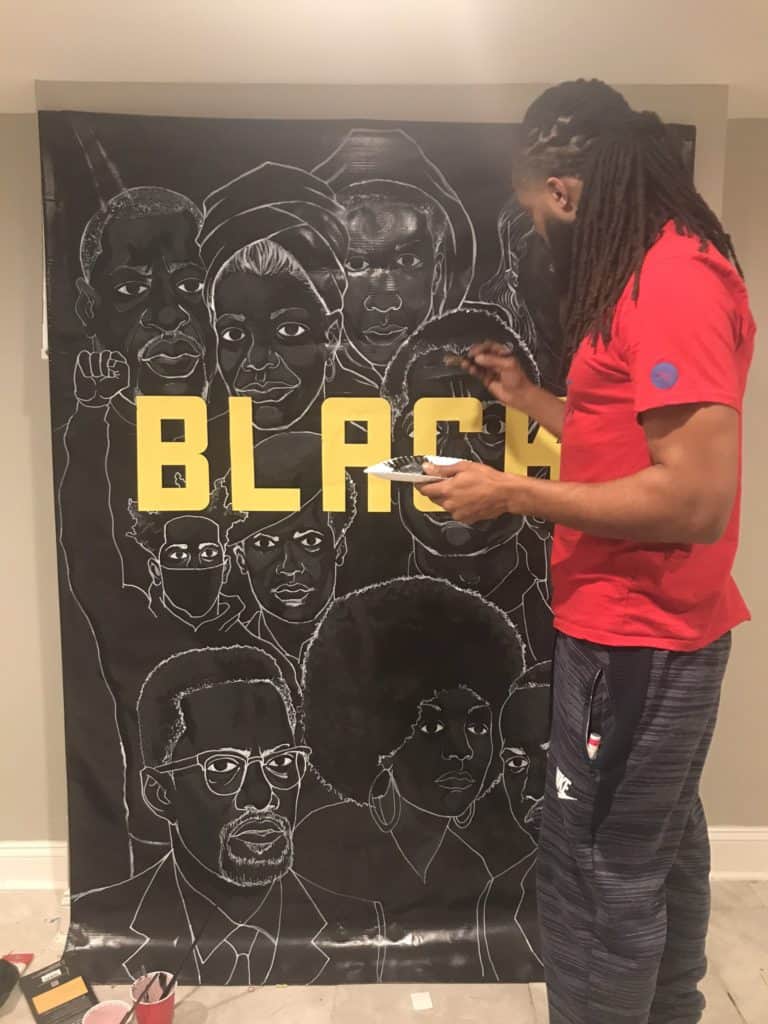
A passion for activism is exactly what the exhibition jurors were looking for. Juror Darin Gilliam has lived in Annapolis since she was 5 years old and now runs ArtFarm with Alison Harbaugh.
“It’s funny that I’m being a juror for Maryland Hall because I took my first art classes at Maryland Hall,” Gilliam said. “It’s kind of a full-circle moment, which is really cool.”
Gilliam was invited by exhibition coordinator Emily Kohlenstein based on her background in art, design and advocacy. Together with jurors Chanel Compton, executive director at the Banneker-Douglass Museum, and artist Tony Spencer, Gilliam reviewed numerous African American artists from around Maryland and narrowed them down based on the messages imbued in their work.
While the original plan was to simply focus on the six BLM banners, the sheer number of applicants inspired Maryland Hall to open its gallery space and fill the hallways with relevant artwork, Gilliam said.
The other selected artists are Ashley Milburn of Baltimore, David Cassidy of Upper Marlboro, Nikki Brooks of Hyattsville, Qrcky of Baltimore, Schroeder Cherry of Baltimore and Greta Chapin McGill.
The Art of Activism exhibit runs until February 27. You can view the banners outdoors at any time, and visit the gallery on Wednesdays and Fridays from 3:30-6:30 p.m. (www.marylandhall.org).



